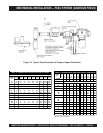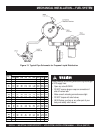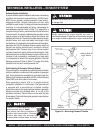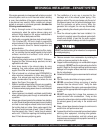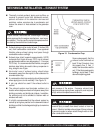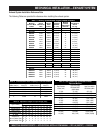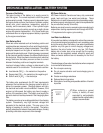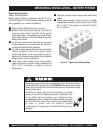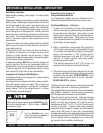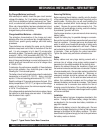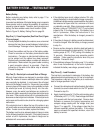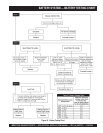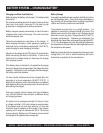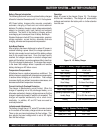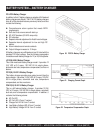
INDUSTRIAL GENERATOR SETS — APPLICATION & INSTALLATION MANUAL — REV. #4 (09/07/07) — PAGE 51
MECHANICAL INSTALLATION — BATTERY SYSTEM
Engine Starting System
Battery Starting Systems
Battery starting systems for generator sets are 12 volt or
24 volt DC (Figure 16). When installing a battery system to
start a generator set, consider the following:
See the Battery Safety Instructions on page 11.
Batteries must have enough capacity to provide the
cranking motor current indicated on the genset
specification sheet. The batteries may be either lead-
acid or nickel-cadmium. Refer to the dealer for approved
battery brand names.
A high output engine-driven alternator and automatic
voltage regulator are provided with the genset to
recharge the batteries during operation.
For most emergency power systems, a float-type battery
charger, powered by the normal power source
(commercial power), must be provided to keep the
batteries fully charged during standby. See the battery
charger section for more information.
Local codes or site conditions may require battery
heaters to maintain a minimum battery temperature of
50°F (10°C) if the battery is subject to freezing
temperatures.
Standard gensets include battery racks and battery
cables.
Battery cable resistance must not result in a voltage
drop between the battery and the starter motor of more
than 1 volt for 12 volt systems or more than 2 volts for
24 volt systems.
Figure 16. Typical Lead Acid Type Battery
Electrolyte is an acid and must be handled with caution. Servicing instruction
from the electrolyte manufacturer must ALWAYS be followed to ensure safety.
Serious injury can result from careless handling and non-compliance to safety
handling instructions.
Overfilling the battery may cause the electrolyte to overflow
resulting in corrosion to nearby components. Immediately wash
off any spilled electrolyte (battery acid). Additionally, when
connecting the positive (+) cable to the battery's positive (+) terminal
post, DO NOT allow contact of the wrench or any metallic object
to come in contact with the battery's negative
(-) terminal post. This may result in an electrical short circuit or an
explosion.



